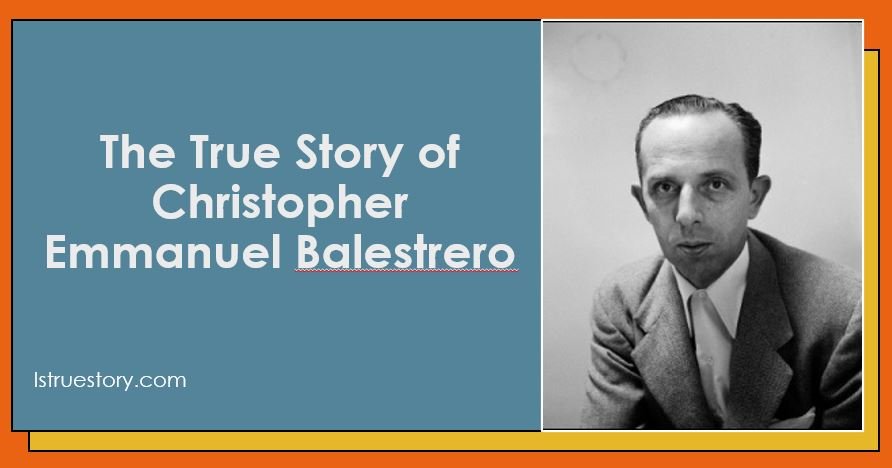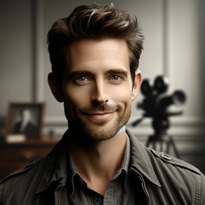
This isn’t a thriller where the hero saves the day. It’s a slow-burn unraveling of an innocent man’s life. Let’s dive into the true story of Manny Balestrero, the man whose real-life nightmare became the plot for one of Hitchcock’s most emotionally charged movies.
Who Was Christopher Emmanuel Balestrero?
Before the spotlight of cinema fell on him, Manny Balestrero was just a hardworking guy living in Queens, New York. He played the double bass in the band at the Stork Club, a famous Manhattan nightclub. He wasn’t a celebrity. He wasn’t wealthy. He was a devoted husband to his wife, Rose, and a father to two boys.
In 1953, the Balestrero family faced financial stress due to Rose needing dental work. Manny decided to borrow against her life insurance policy to help cover the costs. That simple, routine decision was the first domino to fall in a sequence of tragic misunderstandings.
When Manny walked into the Prudential Life Insurance office, two employees thought he looked familiar. Too familiar. They were sure he was the man who had robbed their office months earlier.
The Arrest That Changed Everything
Soon after, the police came knocking. Without any solid evidence beyond the mistaken identity of two witnesses, Manny was arrested and charged with multiple armed robberies. No warning. No opportunity to explain.
The police conducted a lineup. Manny, unaware of the seriousness of the situation, cooperated fully. Unfortunately, the traumatized victims picked him out, believing he was their robber.
Manny was stunned. How could this be happening? He was innocent. But suddenly, he found himself booked, fingerprinted, and facing time in Rikers Island before trial. His life turned into a surreal prison of suspicion.
Rose’s Mental Collapse: A Side of the Story Often Forgotten
The pressure of the arrest didn’t just affect Manny. His wife, Rose, who had always been delicate in health, spiraled into depression. She blamed herself for encouraging Manny to go to the insurance office in the first place.
As the stress mounted, Rose’s mental health deteriorated. She was eventually admitted to a psychiatric facility. It’s one of the most heartbreaking parts of the story. Manny wasn’t just fighting for his freedom—he was trying to hold his family together.
The Courtroom Battle and the Unexpected Twist
It took nearly a year to get to trial. Manny’s lawyer dug into the case and eventually uncovered something unbelievable: another man, closely resembling Manny, had been arrested for a different crime. During his arrest, he confessed to the very robberies that Manny had been accused of.
That man was the real culprit. Just like that, Manny was cleared. But there was no celebration. No restitution. Just the hollow truth that his life would never be quite the same.
Enter Alfred Hitchcock: Why The Wrong Man Was Different
Alfred Hitchcock was known for suspense, drama, and psychological thrillers. But The Wrong Man, released in 1956, was a bold departure. It was quiet. Gritty. Almost documentary-like in tone.
Hitchcock wanted the film to reflect the emotional truth of Manny’s ordeal. He cast Henry Fonda as Manny and Vera Miles as Rose. The movie was shot in the actual locations where the events had occurred: Manny’s real home, the actual jail cells, and the courtroom.
This wasn’t entertainment. It was empathy. Hitchcock said it was the only film that really scared him. Not because of horror, but because it was real.
Fact vs. Fiction: How Accurate Was the Film?
The film follows the facts more closely than most Hollywood adaptations. From Manny’s arrest to Rose’s hospitalization, the plot mirrors real events. The raw portrayal of fear and confusion, especially in scenes like the mugshots and fingerprinting, captures the quiet terror Manny experienced.
Still, there were dramatizations. Dialogues were tightened. Emotions heightened. But the essence? It stayed true. The point wasn’t to add drama—the truth was dramatic enough.
What Happened to Manny and Rose After the Movie?
After being exonerated, Manny returned to music. But things weren’t easy. Rose’s recovery was long, and their family never fully escaped the shadow of what had happened. They moved away from the neighborhood where everyone once knew them.
Manny lived a quiet life after the storm. He died in 1998 at age 88. His story never became a media sensation, but it left a lasting mark on cinema and legal discussions about wrongful arrests.
Why This Story Still Matters Today
Manny’s ordeal happened over 70 years ago, but mistaken identity still haunts justice systems today. Eyewitness testimony, which failed him, is still one of the leading causes of wrongful convictions.
His story reminds us of how fragile our freedom can be. Of how truth can be buried under assumptions. And of the quiet, human cost of being wrongfully accused.
Hitchcock didn’t just direct a movie with The Wrong Man. He echoed the echoless. Gave voice to the voiceless. And in doing so, made us pause and ask: What if it happened to me?
TL;DR
- Christopher Emmanuel Balestrero was a Queens musician falsely accused of robbery in 1953.
- His wrongful arrest inspired Alfred Hitchcock’s 1956 film The Wrong Man.
- Eyewitnesses misidentified him; another man later confessed.
- The film starred Henry Fonda and stuck closely to real events.
- The story is a chilling reminder of how easily justice can go wrong.

I am Jeremy Jahns – Your Cinematic Explorer
Immerse in movie reviews, Hollywood insights, and behind-the-scenes stories.